Craig Cliff's Blog, page 23
March 4, 2012
Kapi-Mana Review / The Questionable Finkler / Literary CVs
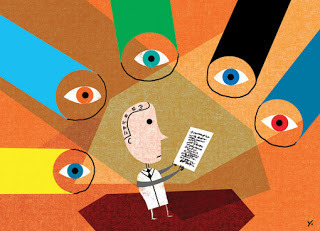 Peer Review by James YangLast gasps
Peer Review by James YangLast gaspsOddly enough, there was a new review of A Man Melting published a week ago in Kapi-Mana News (about 20 months since the book came out). I can only guess that the timing has something to do with my upcoming appearance at Wellington Writers and Readers Week this weekend.
And unlike the last review I stumbled across in a regional Fairfax paper, this one is mostly complimentary. (It's hard to avoid the qualifier when a review uses the 5-star system: a fully complimentary review would not leave 1.5 stars on the table…)
The review plays up the zaniness ('Frivolity rules in the Cliff Universe'), and glosses over the more realistic and sombre stories in the first half of the collection. But with 400 words, a reviewer is often forced to choose their pigeon-hole and stick to it (this isn't the snarky comment of a reviewee, but the early disenchantment of a reviewer showing through).
One comment, however, baffles me.
Towards the end of the review, Kylie Klein-Nixon says, "It's hard to lose yourself as a reader in first person narrative, and so many of Cliff's stories here are in that voice. But Cliff's deft use of language and clever thematic threads - elements from earlier stories pop up in those that follow - will pull you into the stories, and his oddly charming characters will keep you there."
It's hard to lose yourself as a reader in first person narrative?
Is it? Really? The use of the second person ('lose yourself' rather that 'lose myself') suggests this is a common phenomenon. Having read one hundred short stories and counting as a judge for the 2012 Commonwealth Writers Short Story Prize, one observation I have made is that a well deployed first person narrator is more likely to pull me in as a reader than a third person narrator. It's something to do with the limited time a short story has with the reader and the way a voice can covey multiple pieces of information simultaneously (what's happening, the narrator's opinion about what's happening, the education/background of the narrator etc etc). This is not to say one narrative perspective is better than the other, or more likely to win you short story competitions or fame and fortune (the perspective choice must fit the story being told), but a story in the first person comes closest to those most tantalising forms: the confessional, the personal reminiscence and good old office gossip.
Perhaps the question is: do we read short stories to lose ourselves? Or, to revise my use of pronouns, do I read short stories to lose myself? I don't think I do.
This is perhaps where the form diverges from the novel. Rather than being immersive, the short story holds up a facet of a life or a set of lives, and asks the reader to fill out the tetrahedron their own experience (guided in subtle ways by the author's carefully deployed hints). In most short stories, the reader is not meant to lose themselves because there's too much work expected of them. Time's too short to become immersed, to soak, to be passive. This explains why some readers don't take to short stories, and why writing them is always a tightrope walk between entertainment and enlightenment.
So it seemed a strange comment to make with reference to short fiction: that it's hard to lose yourself as a reader (does one expect to?) in first person narratives (aren't they the easiest to believe and buy in to if skilfully enacted?).
The Finkler Question
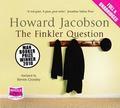 My most recent audiobook has been Howard Jacobson's The Finkler Question. If my listening of late seems to have been Booker-centric (Finkler won in 2010) it's more to do with the smaller range of audiobooks on offer from my local library than paper books, and the fact that doing well in the Booker means a) an audiobook version is likely and b) Wellington City Libraries will probably stock it.
My most recent audiobook has been Howard Jacobson's The Finkler Question. If my listening of late seems to have been Booker-centric (Finkler won in 2010) it's more to do with the smaller range of audiobooks on offer from my local library than paper books, and the fact that doing well in the Booker means a) an audiobook version is likely and b) Wellington City Libraries will probably stock it.I remember reading about Jacobson and Finkler after his Booker win, and came away with the impression that the book was supposed to be humourous. Sadly, I did not find it so. It had that fraught, hyper-analytical, myopic feel of a lot of quote-unquote Jewish TV comedies from the US, but the book was missing that crucial note of levity. It felt like an episode of Curb Your Enthusiasm in which I was asked to take Larry David seriously (and do the same with his conversations about Israel and Palestine with the cast of comers and goers that frequent his house). Jacobsen feels more like a neutered Philip Roth than a bookish Jerry Seinfield (lest we forget that Roth is frequently funny himself).
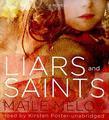
So I have moved on to Maile Meloy's Liars and Saints, which I was delighted to find as an audiobook, having enjoyed her short story collection Both Ways is the Only Way I Want It last year.
Bullet Points
Midway through 2011 I stopped applying for residencies because, even if I got accepted for one (a big if) I wasn't in a position to take it up, what with the wedding, the honeymoon, the house-hunting and the timeline for the completion of THE NOVEL.
But now that I'm nearer to finishing THE NOVEL, I've started to look at where to next. A two or three month residency somewhere new and stimulating sounds like a good way to write a swathe of short stories to complete what would be my second collection (or, depending on the timing, to dive into a new novel).
So last week I went through and updated my literary CV for the first time in twelve months and spruiked myself in a cover letter. Such activities are always carried out with a mixture of discomfort and pride ('Gee, look at all those things I did when I thought I wasn't doing anything except posting photos of birds on my blog').
The steady growth in bullet points beneath the headings "published work" and "other writing credentials" is thanks to a lot of good fortune, some very nice people, and me never saying no to anything. Occasionally, over the past twelve months I've felt like being a Yes Man has slowed my progress on THE NOVEL. Amd it almost certainly did. But in the great wash-up, I'm glad I took every detour. The time for saying 'No' will come. Until then, I'm open for business distraction.
Published on March 04, 2012 23:16
March 2, 2012
Perth: a day to my own devices
The Perth Writers Festival wrapped on Sunday and I didn't fly out till 9am on Tuesday, meaning I had all of Monday to explore. So I picked up a rental car from Thrifty bright and early and headed for Fremantle.
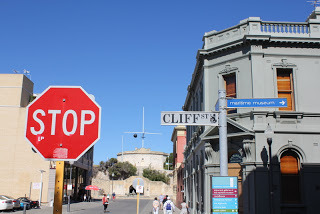 It was my first time driving in Australia in five years and I was quickly reminded how infuriating an experience it is. I had no map (not only did Thrifty not supply one, they did not stock any for sale), but I figured it couldn't be too hard to get to Fremantle – just head to the coast for 25kms – then buy a map there. But Australia must have a road sign rationing programme (most of my WA disappointments come when it behaves/looks/feels just like the rest of Australia): I only saw one sign indicating the direction to Fremantle the whole journey, meaning most of the time I was in that uneasy 'I feel like I'm still heading west' mode. And when there is a sign to mark a turnoff, it is often on the far corner of the intersection, meaning you can often the sign as you drive past the turnoff.
It was my first time driving in Australia in five years and I was quickly reminded how infuriating an experience it is. I had no map (not only did Thrifty not supply one, they did not stock any for sale), but I figured it couldn't be too hard to get to Fremantle – just head to the coast for 25kms – then buy a map there. But Australia must have a road sign rationing programme (most of my WA disappointments come when it behaves/looks/feels just like the rest of Australia): I only saw one sign indicating the direction to Fremantle the whole journey, meaning most of the time I was in that uneasy 'I feel like I'm still heading west' mode. And when there is a sign to mark a turnoff, it is often on the far corner of the intersection, meaning you can often the sign as you drive past the turnoff.
And don't get me started on the rigmarole of turning right (made worse because NZ follows suit at the end of the month - grrr).
At least I didn't have to do any hook turns.
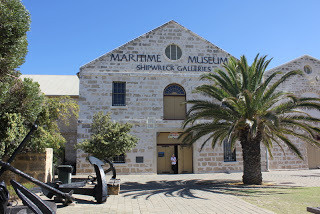 Later on, when I was well north of the city, I was also reminded of the great difference between New Zealand and Australian roads. In New Zealand, the landscape is inescapable. In Australia, it is so often hidden – either deliberately, behind those 3m high slabs that preserve the serenity of the houses over the fence, or the place is just so flat that you can only see the same row of scrubby eucalypts as you drive for miles.
Later on, when I was well north of the city, I was also reminded of the great difference between New Zealand and Australian roads. In New Zealand, the landscape is inescapable. In Australia, it is so often hidden – either deliberately, behind those 3m high slabs that preserve the serenity of the houses over the fence, or the place is just so flat that you can only see the same row of scrubby eucalypts as you drive for miles.
Man, I really seem down on Australia today. Must be all that mid-twenties-spent-in-Queensland misery welling up.
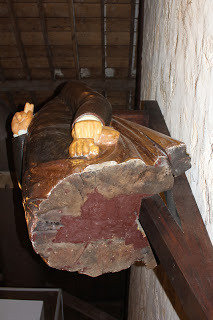 Samuel Plimsoll figureheadAnyway, I went to Fremantle to check out the port, the shipwreck museum and the maritime museum, as there may be a brief stopover in 'Freo' in THE NOVEL. The shipwreck museum was mostly devoted to wrecks of the Dutch East Indies Company, particularly the Batavia, all of which happened well before THE NOVEL's late Nineteenth Century timeframe. The real highlight was the figurehead from the Samuel Plimsoll, one that I'd seen in books and online, so it was great to stand beneath old Sam and see his unsanded, unvarnished, unpainted underside.
Samuel Plimsoll figureheadAnyway, I went to Fremantle to check out the port, the shipwreck museum and the maritime museum, as there may be a brief stopover in 'Freo' in THE NOVEL. The shipwreck museum was mostly devoted to wrecks of the Dutch East Indies Company, particularly the Batavia, all of which happened well before THE NOVEL's late Nineteenth Century timeframe. The real highlight was the figurehead from the Samuel Plimsoll, one that I'd seen in books and online, so it was great to stand beneath old Sam and see his unsanded, unvarnished, unpainted underside.
The WA Maritime Museum was a waste of time (and $10). Hardly anything about the age of sail. All flash and no substance.
I then drove north to Yanchep National Park. Cue another grumpy generalisation about Australia (and how NZ kicks its arse): Upon entry into the park, I was reminded how manmade Australian national parks feel. I'd suspected that it was just the ones I went to in SE Queensland, and I'm sure Kakadu and the Bungle Bungles and all those really isolated places are raw and wild and fantastic, but a visitor to Yanchep's first encounter is with several hectares of landscaped lawns, a restaurant, a gift shop, coin operated BBQs and a lake where (water levels permitting – and they weren't when I was there) you can take a boat tour. And as in Springbrook and Lamington National Parks, even when got away from the mown grass and Streets Ice Cream flags, I was never far away from the roar of a hidden highway.
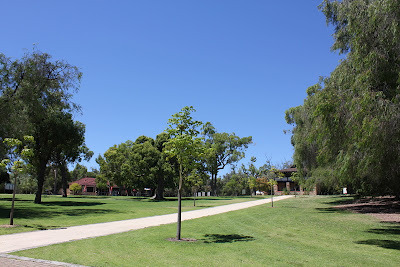 Yanchep National Park (seriously)
Yanchep National Park (seriously)
So it took me a while to get over this flood of animus against Australian National Parks for me to really enjoy Yanchep, but I did in the end and it was all thanks to the animals.
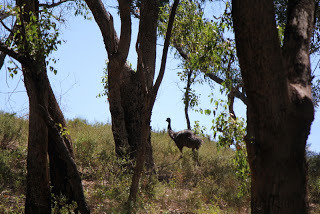 After observing the Western Greys take over the lawns at dusk, I headed to the beach to catch the sunset. As I stood atop the cliffs at Quinn's Rocks it was difficult to get my head around the fact that you could never see the sun rise over the sea in WA (except at the very bottom and very top), only the sun set. Narrow is often used in a pejorative sense (as in limited, penurious, cramped, 'narrow-minded'… the Tacoma Narrows Bridge) but one of the great joys of New Zealand is its narrowness: the ability to hold an endurance race from one coast to the other (passing through some amazingly varied country in the process). Of course, it means the weather's changeable (read: shit), due in part to the narrowness and our mountainous spine. But to never see the sun rise over the sea? Inconceivable.
After observing the Western Greys take over the lawns at dusk, I headed to the beach to catch the sunset. As I stood atop the cliffs at Quinn's Rocks it was difficult to get my head around the fact that you could never see the sun rise over the sea in WA (except at the very bottom and very top), only the sun set. Narrow is often used in a pejorative sense (as in limited, penurious, cramped, 'narrow-minded'… the Tacoma Narrows Bridge) but one of the great joys of New Zealand is its narrowness: the ability to hold an endurance race from one coast to the other (passing through some amazingly varied country in the process). Of course, it means the weather's changeable (read: shit), due in part to the narrowness and our mountainous spine. But to never see the sun rise over the sea? Inconceivable.
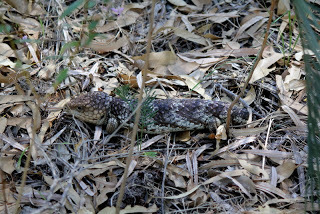 I then drove down through the Swan Valley (I often have to stop myself from saying/writing Swann's Way, which a very wanky Freudian slip), a wine producing region to the north of Perth, found a quiet spot and slept in the back of my Hyundai i20. I was awoken after a couple of hours by the sound of galloping hooves. In the faint comingled light of the moon and the nearby conurbation I could make out a white horse running back and forth in its paddock across the road from me. I wondered if maybe it was displaying for my benefit (most likely it was telling me to eff off), but it soon settled down. When I rose after sunrise its head was leaning over the fencepost, eyeing down my car.
I then drove down through the Swan Valley (I often have to stop myself from saying/writing Swann's Way, which a very wanky Freudian slip), a wine producing region to the north of Perth, found a quiet spot and slept in the back of my Hyundai i20. I was awoken after a couple of hours by the sound of galloping hooves. In the faint comingled light of the moon and the nearby conurbation I could make out a white horse running back and forth in its paddock across the road from me. I wondered if maybe it was displaying for my benefit (most likely it was telling me to eff off), but it soon settled down. When I rose after sunrise its head was leaning over the fencepost, eyeing down my car.
I dropped the rental car off at the domestic terminal just after 7am and proceeded to fly home to Wellington via Sydney.
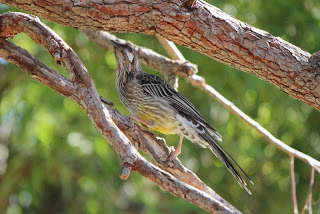 Movies I watched:
Movies I watched:
Crazy Stupid Love – It has its moments. The last twenty minutes is unbearably Hollywood: everything must collide and then get smoothed out (there's even a scene where Steve Carrill gives an impromptu address about love and soulmates at his son's middle school graduation).
Midnight in Paris – Sheesh. Watching a Woody Allen movie these days is like sitting at the table next to a bunch of rich, entitled American Tourists. In the flesh these people are often annoying, but if you get the chance to talk with them, there's usually a warmth and generosity below the surface that is some small redemption. But in Midnight in Paris, as in Vicky Christina Barcelona (the last Allen movie I saw) and Match Point (the one before that), Americans are irredeemable. I nearly gave up watching after 20 minutes, but then Owen Wilson (who's sounding more and more like Jack Nicholson these days, don't you think) met up with Scott & Zelda Fitzgerald and Ernest Hemingway. The actor who played Hemingway did a good job, but in the end all these writer and artist cameos were just as shallow as Woody's contemporary characters.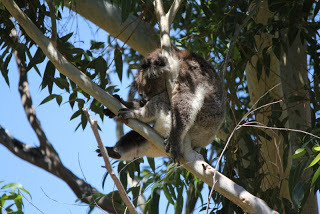
While waiting for my baggage at Wellington Airport, I turned my phone back on and found I had two voicemail messages, both from Thrifty Car Rentals. The first asked if I was going to return my car today. The second was, like, uh, so you never returned your car today, do you want it for a third day?I'd parked it in a Thrifty parking spot at the airport (my agreed drop-off destination) and handed the keys to a dude in a Thrifty-emblazoned safety vest. 'That's fine,' he'd told me, 'there's no need to go into the office. I'll sort it out.'
These words took on a sinister tone as I replayed them back in NZ. Had a thief come across a Thrifty safety vest and waited for a gullible Kiwi to give him the keys to a car he'd then nick? What's my liability in such a case? Or had Thrifty's returns system just had a hiccup? It was 11.30pm NZT and 6.30pm Perth time, so I couldn't get a hold of anyone to give me some answers. I couldn't even leave a phone message for anyone from Thrifty anywhere in Australia (the NZ call centre was open and were lovely but their system is quite separate from Australia's). So I got home, composed a mildly distressed email to Thrifty stating the minutiae of my return (the number of the parking space, the time of my return, a detailed description of the dude I gave the keys that would please any police sketch artist) and went to bed to enjoy a poor night's sleep.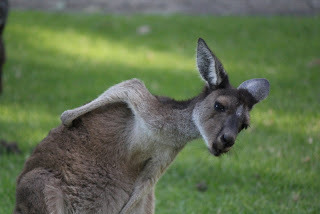
When I finally got hold of Thrifty in Perth the next day, they said that their system had expected the car to be returned back to Perth CBD, despite the fact I'd laboured this point I'd be returning it to the domestic airport with the person who'd served me (she knew what time my flight was and everything). So in the end the car was found, the charge for the extra day was reversed (though I lost a little money on the exchange rate, as well as the exchange margin my bank charged and the numerous international calls I had to make on my phone to sort it out). Not good enough Thrifty. Not good enough.
Man, I've been a total Grinch in this post.
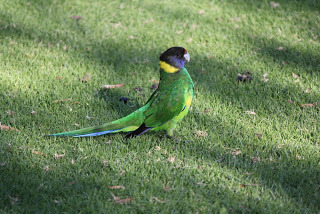 Let me reiterate what I said in previous Perth posts: I had a great time at the writers festival. It would be hard to top my time in Sydney Writers Festival (8 sessions around greater Sydney and the Blue Mountains, all the outreach activities, the awesome writers I met, the free breakfasts and wifi at the hotel, the great weather, and the general buzz around the festival precinct), but Perth would probably come second if I ever made a list (which I won't).
Let me reiterate what I said in previous Perth posts: I had a great time at the writers festival. It would be hard to top my time in Sydney Writers Festival (8 sessions around greater Sydney and the Blue Mountains, all the outreach activities, the awesome writers I met, the free breakfasts and wifi at the hotel, the great weather, and the general buzz around the festival precinct), but Perth would probably come second if I ever made a list (which I won't).
In one week it's Wellington's turn to wow me. I already know I like the city, the roads, the national parks… I even like the festival (I've been an audience member at three writers and readers weeks). There's no way I can be stranded at the airport and I've no need to deal with rental car companies. What could possibly go wrong?
Oh yeah, I'm moving house!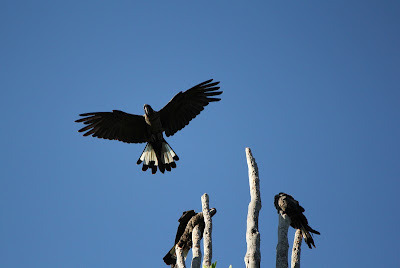


 It was my first time driving in Australia in five years and I was quickly reminded how infuriating an experience it is. I had no map (not only did Thrifty not supply one, they did not stock any for sale), but I figured it couldn't be too hard to get to Fremantle – just head to the coast for 25kms – then buy a map there. But Australia must have a road sign rationing programme (most of my WA disappointments come when it behaves/looks/feels just like the rest of Australia): I only saw one sign indicating the direction to Fremantle the whole journey, meaning most of the time I was in that uneasy 'I feel like I'm still heading west' mode. And when there is a sign to mark a turnoff, it is often on the far corner of the intersection, meaning you can often the sign as you drive past the turnoff.
It was my first time driving in Australia in five years and I was quickly reminded how infuriating an experience it is. I had no map (not only did Thrifty not supply one, they did not stock any for sale), but I figured it couldn't be too hard to get to Fremantle – just head to the coast for 25kms – then buy a map there. But Australia must have a road sign rationing programme (most of my WA disappointments come when it behaves/looks/feels just like the rest of Australia): I only saw one sign indicating the direction to Fremantle the whole journey, meaning most of the time I was in that uneasy 'I feel like I'm still heading west' mode. And when there is a sign to mark a turnoff, it is often on the far corner of the intersection, meaning you can often the sign as you drive past the turnoff.And don't get me started on the rigmarole of turning right (made worse because NZ follows suit at the end of the month - grrr).
At least I didn't have to do any hook turns.
 Later on, when I was well north of the city, I was also reminded of the great difference between New Zealand and Australian roads. In New Zealand, the landscape is inescapable. In Australia, it is so often hidden – either deliberately, behind those 3m high slabs that preserve the serenity of the houses over the fence, or the place is just so flat that you can only see the same row of scrubby eucalypts as you drive for miles.
Later on, when I was well north of the city, I was also reminded of the great difference between New Zealand and Australian roads. In New Zealand, the landscape is inescapable. In Australia, it is so often hidden – either deliberately, behind those 3m high slabs that preserve the serenity of the houses over the fence, or the place is just so flat that you can only see the same row of scrubby eucalypts as you drive for miles.Man, I really seem down on Australia today. Must be all that mid-twenties-spent-in-Queensland misery welling up.
 Samuel Plimsoll figureheadAnyway, I went to Fremantle to check out the port, the shipwreck museum and the maritime museum, as there may be a brief stopover in 'Freo' in THE NOVEL. The shipwreck museum was mostly devoted to wrecks of the Dutch East Indies Company, particularly the Batavia, all of which happened well before THE NOVEL's late Nineteenth Century timeframe. The real highlight was the figurehead from the Samuel Plimsoll, one that I'd seen in books and online, so it was great to stand beneath old Sam and see his unsanded, unvarnished, unpainted underside.
Samuel Plimsoll figureheadAnyway, I went to Fremantle to check out the port, the shipwreck museum and the maritime museum, as there may be a brief stopover in 'Freo' in THE NOVEL. The shipwreck museum was mostly devoted to wrecks of the Dutch East Indies Company, particularly the Batavia, all of which happened well before THE NOVEL's late Nineteenth Century timeframe. The real highlight was the figurehead from the Samuel Plimsoll, one that I'd seen in books and online, so it was great to stand beneath old Sam and see his unsanded, unvarnished, unpainted underside.The WA Maritime Museum was a waste of time (and $10). Hardly anything about the age of sail. All flash and no substance.
I then drove north to Yanchep National Park. Cue another grumpy generalisation about Australia (and how NZ kicks its arse): Upon entry into the park, I was reminded how manmade Australian national parks feel. I'd suspected that it was just the ones I went to in SE Queensland, and I'm sure Kakadu and the Bungle Bungles and all those really isolated places are raw and wild and fantastic, but a visitor to Yanchep's first encounter is with several hectares of landscaped lawns, a restaurant, a gift shop, coin operated BBQs and a lake where (water levels permitting – and they weren't when I was there) you can take a boat tour. And as in Springbrook and Lamington National Parks, even when got away from the mown grass and Streets Ice Cream flags, I was never far away from the roar of a hidden highway.
 Yanchep National Park (seriously)
Yanchep National Park (seriously)So it took me a while to get over this flood of animus against Australian National Parks for me to really enjoy Yanchep, but I did in the end and it was all thanks to the animals.
 After observing the Western Greys take over the lawns at dusk, I headed to the beach to catch the sunset. As I stood atop the cliffs at Quinn's Rocks it was difficult to get my head around the fact that you could never see the sun rise over the sea in WA (except at the very bottom and very top), only the sun set. Narrow is often used in a pejorative sense (as in limited, penurious, cramped, 'narrow-minded'… the Tacoma Narrows Bridge) but one of the great joys of New Zealand is its narrowness: the ability to hold an endurance race from one coast to the other (passing through some amazingly varied country in the process). Of course, it means the weather's changeable (read: shit), due in part to the narrowness and our mountainous spine. But to never see the sun rise over the sea? Inconceivable.
After observing the Western Greys take over the lawns at dusk, I headed to the beach to catch the sunset. As I stood atop the cliffs at Quinn's Rocks it was difficult to get my head around the fact that you could never see the sun rise over the sea in WA (except at the very bottom and very top), only the sun set. Narrow is often used in a pejorative sense (as in limited, penurious, cramped, 'narrow-minded'… the Tacoma Narrows Bridge) but one of the great joys of New Zealand is its narrowness: the ability to hold an endurance race from one coast to the other (passing through some amazingly varied country in the process). Of course, it means the weather's changeable (read: shit), due in part to the narrowness and our mountainous spine. But to never see the sun rise over the sea? Inconceivable. I then drove down through the Swan Valley (I often have to stop myself from saying/writing Swann's Way, which a very wanky Freudian slip), a wine producing region to the north of Perth, found a quiet spot and slept in the back of my Hyundai i20. I was awoken after a couple of hours by the sound of galloping hooves. In the faint comingled light of the moon and the nearby conurbation I could make out a white horse running back and forth in its paddock across the road from me. I wondered if maybe it was displaying for my benefit (most likely it was telling me to eff off), but it soon settled down. When I rose after sunrise its head was leaning over the fencepost, eyeing down my car.
I then drove down through the Swan Valley (I often have to stop myself from saying/writing Swann's Way, which a very wanky Freudian slip), a wine producing region to the north of Perth, found a quiet spot and slept in the back of my Hyundai i20. I was awoken after a couple of hours by the sound of galloping hooves. In the faint comingled light of the moon and the nearby conurbation I could make out a white horse running back and forth in its paddock across the road from me. I wondered if maybe it was displaying for my benefit (most likely it was telling me to eff off), but it soon settled down. When I rose after sunrise its head was leaning over the fencepost, eyeing down my car.I dropped the rental car off at the domestic terminal just after 7am and proceeded to fly home to Wellington via Sydney.
 Movies I watched:
Movies I watched:Crazy Stupid Love – It has its moments. The last twenty minutes is unbearably Hollywood: everything must collide and then get smoothed out (there's even a scene where Steve Carrill gives an impromptu address about love and soulmates at his son's middle school graduation).
Midnight in Paris – Sheesh. Watching a Woody Allen movie these days is like sitting at the table next to a bunch of rich, entitled American Tourists. In the flesh these people are often annoying, but if you get the chance to talk with them, there's usually a warmth and generosity below the surface that is some small redemption. But in Midnight in Paris, as in Vicky Christina Barcelona (the last Allen movie I saw) and Match Point (the one before that), Americans are irredeemable. I nearly gave up watching after 20 minutes, but then Owen Wilson (who's sounding more and more like Jack Nicholson these days, don't you think) met up with Scott & Zelda Fitzgerald and Ernest Hemingway. The actor who played Hemingway did a good job, but in the end all these writer and artist cameos were just as shallow as Woody's contemporary characters.

While waiting for my baggage at Wellington Airport, I turned my phone back on and found I had two voicemail messages, both from Thrifty Car Rentals. The first asked if I was going to return my car today. The second was, like, uh, so you never returned your car today, do you want it for a third day?I'd parked it in a Thrifty parking spot at the airport (my agreed drop-off destination) and handed the keys to a dude in a Thrifty-emblazoned safety vest. 'That's fine,' he'd told me, 'there's no need to go into the office. I'll sort it out.'
These words took on a sinister tone as I replayed them back in NZ. Had a thief come across a Thrifty safety vest and waited for a gullible Kiwi to give him the keys to a car he'd then nick? What's my liability in such a case? Or had Thrifty's returns system just had a hiccup? It was 11.30pm NZT and 6.30pm Perth time, so I couldn't get a hold of anyone to give me some answers. I couldn't even leave a phone message for anyone from Thrifty anywhere in Australia (the NZ call centre was open and were lovely but their system is quite separate from Australia's). So I got home, composed a mildly distressed email to Thrifty stating the minutiae of my return (the number of the parking space, the time of my return, a detailed description of the dude I gave the keys that would please any police sketch artist) and went to bed to enjoy a poor night's sleep.

When I finally got hold of Thrifty in Perth the next day, they said that their system had expected the car to be returned back to Perth CBD, despite the fact I'd laboured this point I'd be returning it to the domestic airport with the person who'd served me (she knew what time my flight was and everything). So in the end the car was found, the charge for the extra day was reversed (though I lost a little money on the exchange rate, as well as the exchange margin my bank charged and the numerous international calls I had to make on my phone to sort it out). Not good enough Thrifty. Not good enough.
Man, I've been a total Grinch in this post.
 Let me reiterate what I said in previous Perth posts: I had a great time at the writers festival. It would be hard to top my time in Sydney Writers Festival (8 sessions around greater Sydney and the Blue Mountains, all the outreach activities, the awesome writers I met, the free breakfasts and wifi at the hotel, the great weather, and the general buzz around the festival precinct), but Perth would probably come second if I ever made a list (which I won't).
Let me reiterate what I said in previous Perth posts: I had a great time at the writers festival. It would be hard to top my time in Sydney Writers Festival (8 sessions around greater Sydney and the Blue Mountains, all the outreach activities, the awesome writers I met, the free breakfasts and wifi at the hotel, the great weather, and the general buzz around the festival precinct), but Perth would probably come second if I ever made a list (which I won't).In one week it's Wellington's turn to wow me. I already know I like the city, the roads, the national parks… I even like the festival (I've been an audience member at three writers and readers weeks). There's no way I can be stranded at the airport and I've no need to deal with rental car companies. What could possibly go wrong?
Oh yeah, I'm moving house!


Published on March 02, 2012 01:57
February 29, 2012
Perth Writers Festival – part two
(You can read part one here.)
Ah,yes, the Feast of Words. An open air dinner for hundreds of Perthians (is thatwhat they're called? Ispent six days there and it never came up) with four writers givingfood-related readings for 8-10 minutes between the courses. But before BarbaraTrapido could start, it started to drizzle. Everyone stuck it out for a minuteor two, but the precipitation did not appear to be easing so people made for theeaves of Winthrop Hall.
Afterabout five minutes the drizzle relented, waiters mopped down seats and drainedthe water from dinner plates and everyone returned to their seats. DanielleBenda, the Writer's Festivals' programmedirector and MC for the night, introduced Barbara Trapido, who read from Temples of Delight. The rain started upjust as she was finishing and became actual rain a few moments later causingeveryone to make for the eaves once more.
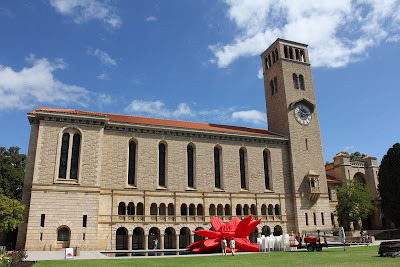 Winthrop Hall, during the day... when it's not rainingButthis shower past in another five minutes and the caterers were finally able tobring out the breads and dips.
Winthrop Hall, during the day... when it's not rainingButthis shower past in another five minutes and the caterers were finally able tobring out the breads and dips.Nextup to the podium was Johan Harstad, who has written for TV and theatre as wellas several books, but only his novel, BuzzAldrin, what happened to you in all the confusion has been released inEnglish at this moment (other translations are in the works). Without a lot offood in Buzz Aldrin, Harstad decidedto write something specifically for the night while sitting beside the SwanRiver. The result, a meditation on the torture of Tuesday leftovers and how itfostered his escapism as a child, was riotously funny and put everyone back ina good mood after the two weather blips.
Themain course was then served, with large dishes of chicken, potatoes, beans,cauliflower, pumpkin and salad being handed down the table from the far end.When a dish reached the writer's end of the table (also featuring the directors of thewriters fest and the overall arts festival) we were lucky if there was acrouton in the salad bowl. With the rain delays, everyone was quite hungry bythis time and we writers were forced to look down the table at those fortunatesouls who were tucking in to the meal.
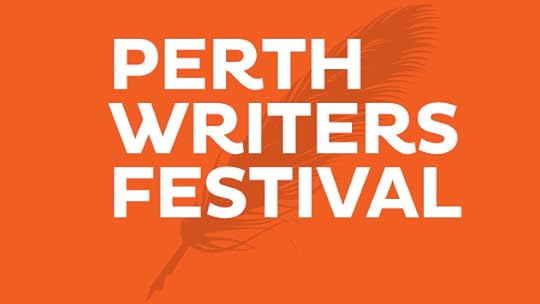 Itwas a bit of a dilemma for the organisers, as on the one hand here were fourinternational writers, the stars of the show, (and one publicist and onepublisher and two festival directors) getting to short shrift. On the otherhand, we hadn't paid $120for a ticket, so maybe we did deserve to be served last. Eventually some more plates of food weredelivered to our end of the table and their contents quickly consumed.
Itwas a bit of a dilemma for the organisers, as on the one hand here were fourinternational writers, the stars of the show, (and one publicist and onepublisher and two festival directors) getting to short shrift. On the otherhand, we hadn't paid $120for a ticket, so maybe we did deserve to be served last. Eventually some more plates of food weredelivered to our end of the table and their contents quickly consumed.Thenit was time for Dennis O'Driscoull toread. He read three poems but other Irish poets and finished with one of hisown. Judging by the audience reaction he came a close second to Johan in the 'delightful' stakes.
Thendessert. No hitches there. Then it was my turn to read.
I'd beenwatching my wine intake all night, knowing my turn on the lectern would come,but I didn't factor inthe somatostatins my meal would release. I read the passage from 'FacingGalapagos' where thenarrator is robbed by a man wielding an iguana, then befriends the man and eatsa lot of tropical fruit (the foodie-connection; apt for the final stages of ameal, but honestly I didn't have manyother foodie sections that worked for an 8 minute reading) and read okay, but Ilacked a bit of zing and wasn't able to overcome the general post-meal malaise of theaudience. It was also pretty fricken cold for your average Perthian, and theevent had run long due to the rain.
Istepped down from the stage knowing I could have done better, could have foundor manufactured a better passage to read, could have read what I did better,but thems the breaks. It was still a huge honour to have appeared at such anevent -- rain drops and food delays just made it all the more memorable.
Sundaywas the last day of the festival. It was also Family Day, so the UWA campus wascrawling with families and face-painters. It's always good to see young peoplehaving fun with a bookish slant.
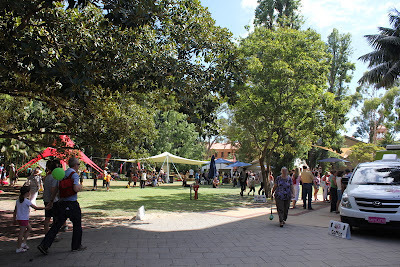
Myfinal session was 'Finding theextraordinary in the ordinary' with Barbara Trapido and Arnold Zable. It was anothergreat session. Not quite as fun as the short story one (there was a bit wherewe all were asked about how we note down and organise our ideas; I don't findtalking about notebooks vs post-its vs Evernote very thrilling, but maybe that's just me) – but it mightbe in my top three.
Again, the time flew by and I sold and signed a few morebooks afterwards.
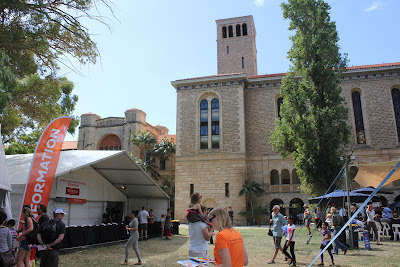
Thenit was back to the hotel bar to unwind and chat with the other writers. I spoketo Barabara Trapido and Kathy, her minder from Bloomsbury, about talkingparrots, Ryan Gosling and mondegreens. I discussed Isaac Babel, Herman Melvilleand school design with Dominic Hohn (author of Moby-Duck). I flitted between other conversations as well, and whenI had enough material (and the bar closed) I went upstairs and wrote myDominion Post column. (I submitted it at 2am, meaning I just managed to get itto my editor before they started work on Monday morning.)
Andthat, my friends, is a brief précis of my Perth Writers Festival. There're a lot of great writers that I metand enjoyed hanging out with that I haven't mentioned here. I always worry that my efforts to be informative sound too much like name-dropping. I don't want tosound like a douche, because I honestly don't approach the social side offestivals in a douchy 'what's in it forme?' way.
Before I was published I wouldpractice being interviewed while in the shower, steeled myself for receivingreviews (and boldly hoped that one or two might include praise), knew salesfigures and financial rewards would be modest, but I never really consideredwhat it would be like to hang out with other writers, or expected to enjoymeeting them and having a chat, that it would be so rewarding andre-invigorating on a personal/creative level.
Thisdoes not conclude my Perthly posts, however, as I had a day to my own devisesbefore I flew back to New Zealand. Come back tomorrow to hear about cockatoos,kangaroos and rental car confusion. Oh, and which movies I watched on theplane!
Published on February 29, 2012 11:20
Perth Writers Festival – part one
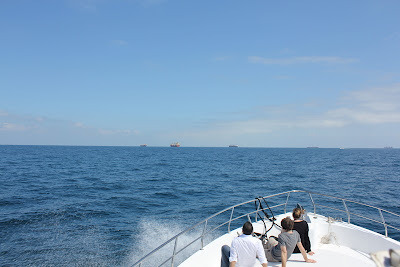
I left Wellington on the afternoon of Wednesday 22 February, flying first toMelbourne and then on to Perth (both flights approx 4 hours).
Movies I watched: 'Moneyball' (decent), 'The Ides of March' (decent) and 'The Adventures ofTintin' (very nearly gave up on it - not the biggest fan of the books but onfilm the boy detective annoyed the shit out of me).
Iarrived in Perth at 8pm (they're 5 hours behind NZ) and was surprised to find it pitchblack outside, then remembered WA does not 'do' daylight savings. It was aclose, muggy evening after a scorcher of a day and I worried that the heat andhumidity would mar my festival experience. I needn't have, as the temperaturefor the next five days was mild in comparison, never getting above 28 degreesand without much humidity.
Butto experience the festival I first had to leave the airport, which took a whileas the driver that was supposed to collect me was nowhere to be found. After aseries of phone calls to organisers and drivers, I was picked up two hoursafter my arrival, by which stage it was 3am NZT and I was keen to check in tothe hotel and hit the hay.
OnThursday all the international authors at the festival with the time andinclination to go on a boat trip were taken out the Rottnest Island. Gatheredin the hotel lobby, waiting to be walked down to the jetty, I found myselfstanding opposite Germaine Greer.
'Ilike your t-shirt' she said.
Severalpossible responses occurred to me, most too frightening to offer to the authorof 'The Female Eunuch', so I just said, 'Thanks.'
Ourboat was rather flash and there was plenty of wine and soft drinks to be had onthe voyage. It took about an hour to make it down the Swan River to Fremantleand then another hour out to the island.
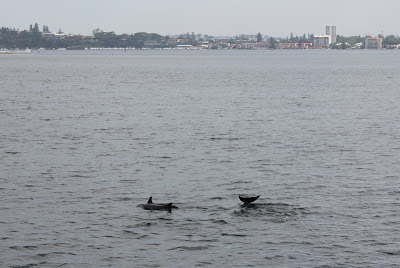 Bottlenose dolphins, Swan RiverIhad been looking forward to a spot of birding on the island and seeing some quokka, but the boat anchored aboutfifty metres offshore and we had to swim/snorkel to land, which ruled out takenbins or cameras. It also meant I washed up on the beach de-sunscreened andshirtless, and could only last twenty minutes on the white hot sand beforereturning to the water (even then I got a bit sunburnt). I saw a few fish -wrasse, a large kingfish-y fish, sundry tiddlers - but nothing to compare withthe snorkelling I did in NZ in December (and certainly not the Great BarrierReef). But it was still fun.
Bottlenose dolphins, Swan RiverIhad been looking forward to a spot of birding on the island and seeing some quokka, but the boat anchored aboutfifty metres offshore and we had to swim/snorkel to land, which ruled out takenbins or cameras. It also meant I washed up on the beach de-sunscreened andshirtless, and could only last twenty minutes on the white hot sand beforereturning to the water (even then I got a bit sunburnt). I saw a few fish -wrasse, a large kingfish-y fish, sundry tiddlers - but nothing to compare withthe snorkelling I did in NZ in December (and certainly not the Great BarrierReef). But it was still fun.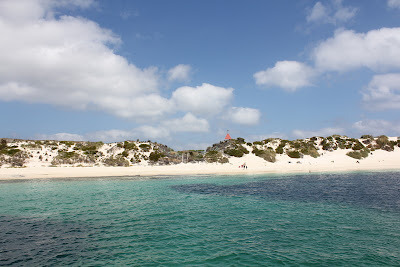 Rottnest Island from our mooring, Parakeet BayThebest part about the trip was just hanging out with the other writers who'd allarrived the day before like me. A very civilised way to ease into a festival, Imust say.
Rottnest Island from our mooring, Parakeet BayThebest part about the trip was just hanging out with the other writers who'd allarrived the day before like me. A very civilised way to ease into a festival, Imust say.Inthe evening, the festival kicked off with Germaine Greer's opening address oneco-feminism, which was delivered in Winthrop Hall at the University of WA. Theentire campus is architecturally… forceful, but this grand hall istotally out there: a combination of a Viking mead hall and a Siciliancathedral, replete with stained glass mandala, baroque marble floors andAboriginal art on the rafters.
Afterwards,the writers and invited guests gathered outside for the PWF opening party. Iwas still getting used to the fact that you could hold an event like thisoutside, with no shelter or backup plan -- knowing I'd be appearing on thissame lawn in two nights' time for The Feast of Words... The only gripe aboutthe party was the minimal food. We'd boarded the bus at 5.30 to go to theopening address and it was past ten when we got taken back to town: a fewslivers of lamb pide didn't cut it unfortunately. (See also: Stephen Romei's festival wrap for a glimpse of how other writers coped with the food shortage).
 Winthrop Hall, UWAFriday:the festival started in earnest. My first session was 'Short, not so sweet',discussing the short story form with Janette Turner Hospital and Amanda Curtin.Counting on my fingers just now, I think this would have been my eleventh paneldiscussion in front of an audience since AMan Melting came out, and I think this one would have to have been the mostrewarding.
Winthrop Hall, UWAFriday:the festival started in earnest. My first session was 'Short, not so sweet',discussing the short story form with Janette Turner Hospital and Amanda Curtin.Counting on my fingers just now, I think this would have been my eleventh paneldiscussion in front of an audience since AMan Melting came out, and I think this one would have to have been the mostrewarding. The session was ably chaired by Georgia Richter, who managed to setthe session off on an interesting path early and from then on it felt like areal conversation. We discussed the rewards and challenges of the form, the wayideas germinate, how some ideas are best suited to a short story (or a novel ora poem), how we approached the task of pulling stories together into acollection, whether we read other writers when immersed in our own work and howto deal with the agony of influence. There was just the right amount ofagreement and divergence and we could have filled another hour, easily. And asan added bonus, the two questions from the audience were good'ns.
Wewere all on a bit of a high after the session (having all been in ones thatnever quite reached top gear) and several audience members commented how muchthey enjoyed it. Ine said it was the best session they'd seen at the festivalso far, but that's not saying much seeing how it was only the afternoon of the firstfull day. But I signed eight or ten books at the signing table, easily the mostI've ever done after a single session, which I think is a good barometer(Janette and Amanda were also in high demand).
Ifonly you could catch lightning in a bottle.
 Earlierthat day I sat in on a session about sex and literature featuring Krissy Kneen,Glen Duncan and Frank Moorhouse. I've read and admired the work of Moorhouse,but the others were new to me. After the first two writers gave readingsinvolving octopus on octopus on human action and werewolf sex, Frank Moorhouselaunched into a patchy tirade about the 'creeping gentilism' of all thosewarnings that come on before TV shows. He also called Glen Duncan 'Duncan'about six times during the session. You could see Glen considering whether tocorrect him the first few times, then, when he realised the chance had last,seething politely for the rest of the session.
Earlierthat day I sat in on a session about sex and literature featuring Krissy Kneen,Glen Duncan and Frank Moorhouse. I've read and admired the work of Moorhouse,but the others were new to me. After the first two writers gave readingsinvolving octopus on octopus on human action and werewolf sex, Frank Moorhouselaunched into a patchy tirade about the 'creeping gentilism' of all thosewarnings that come on before TV shows. He also called Glen Duncan 'Duncan'about six times during the session. You could see Glen considering whether tocorrect him the first few times, then, when he realised the chance had last,seething politely for the rest of the session.Onthe van ride back to the hotel I had a great chat with Favel Parrett. We're bothworking on books with sections set in the subantarctic, you see. To any writersfestival artistic directors out there: once our respective books come out, youcan chuck Favel and me on a stage and we'll easily fill an hour with ourpassion for albatross and easterlies.
Fridayevening I was invited to the dinner that Random House Australia put on for itsauthors. In the bar prior to going to the restaurant, I was involved in a smallintrigue as I pretended to be the Perth-based friend of an author who shallremain nameless.
Here's thebackstory: Author X had recently switched publishers, but his tlast three books- the books he was promoting at the fest, had all been released by his oldpublisher. To their credit they were still supporting him and invited him totheir dinner, but he was booked to go out with a friend that night anddeclined. The friend, however, came down crook and cancelled and in the courseof drinking at the hotel bar Author X had been convinced to go to dinner withhis new publishers. The only problem was that to get to the cabs waiting totake him to the restaurant, he had to pass through the lobby, and waiting inthe lobby were a bunch of publicists and authors from his old publisher. I toldhim no one here knew what I looked like and I could pose as his Perth friend,allowing him to pass through the lobby without suspicion. It all went to planuntil we go in the cab but had to wait for a third author to fill it. Meanwhile Author X was ducking his head downand muttering, 'quickly, quickly'.
Anyway,my publisher's dinner wasfun. I spent most of my time talking to Perth-based writer Sara Foster (who'dalso been on the boat to Rottnest) and Nick Earls. I think I read one of Nick'sbooks when I lived in Brisbane, but the details were sketchy - sometimes italmost better to have not read any books at all. Anyway, Nick and Sara werelovely and the time flew by.
Ihad Saturday to myself until the evening so I went for a walk around the city.My first impression of Perth was that it was a fairly typical Australianmetropolis: flat, straddling a river, chocka with hideous 70s beige pebbledashmonoliths.
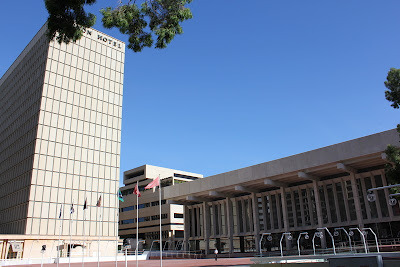
And for a long time on my walk I felt that Perth's architecture wasactually a new low, so hideous, so perfunctory, so leaden. But gradually thequirkiness of its older buildings emerged and I realised the whole place wasbatshit crazy. The UWA campus was not an aberration or a folly, but a naturalextension of the craziness.
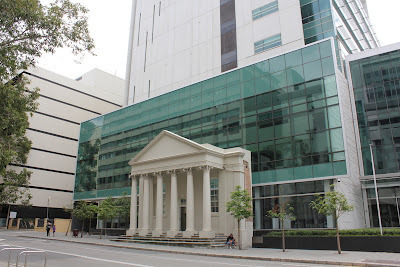
Inthe afternoon I headed out to the festival and caught the outdoor poetryreading featuring David Brooks (who chaired my session in the Blue Mountains at Sydney Writers Fest last May),Canadian Michael Crummey, Aussie Cate Kennedy and Ireland's Dennis O'Driscoull.All poets were fantastic in their own ways.
Ithen went to a session about building bigger works from smaller piecesfeaturing Julienne van Loon, Favel Parrett andmy pal Frank Moorhouse. Again, the session was a bit disjointed (at one stageFrank's phone started ringing) but it was still worthwhile.
Andthen it was time for the Feast of Words... But you'll just haveto wait until tomorrow.
Published on February 29, 2012 00:37
February 20, 2012
Reflection / Playlist / Perth / Door
Upon reflection: an update on Sunday's braindump about new ideas
I feel compelled to open with a metaphor about the sudden flare of a sky rocket (and their unseen plummet back to earth) or the task of catching fireflies (and coaxing them to glow inside the mason jar).
One piece of context I did not mention on Sunday is that I had just been watching Justin Paton's superb 'How To Look at a Painting' on TV1 (the series based on Paton's book of the same name). The show had, I suspect, conditioned me to thinking, if not in two dimensions, at least in visual and static terms. The image of the New Zealander looking upon a ruined London could be taken up and expanded into a nice collection of images (kiwis in jandals and MacPacs looking at the bombed-out remains of Stockholm, an ivy covered Eiffel tower, the crumbling facades of Wall Street…)
(Even this seems rather obvious and laboured to me today.)
But to take this idea and make fiction… it's just too static. Perhaps Prof. Blyde Muddersnook did it best 101 years ago?
Playlist for an elongated February
Sirius/Eye in the Sky – Alan Parsons ProjectWhen I write my Masters thesis – John K SamsonNight Terror – Laura MarlingWitches – LowBizness – tUnE-yArDsTiny Dancer – Elton John (but only if you sing it: 'Hold me closer, Tony Danza')Joey – Concrete BlondeEngland – The National
Mykonos – Fleet Foxes
Away in WA
This'll be my last post before I fly out to Perth to attend their writers festival. I arrive late on Wednesday (it's a pretty long way from Wellington: two x 3.5 hour flights) and am being taken to Rottnest Island to watch birds and snorkel on Thursday before Germaine Greer's opening address.
I'm appearing in three sessions:Finding the extraordinary in the ordinary with Barbara Trapido and Arnold ZableFeast of Words with Barbara Trapido, Johan Harstard and Dennis O'DriscoullShort, not so sweet with Janette Turner Hospital and Amanda Curtin.
I've also got two days to explore around Perth after the festival finishes. If I can't post during the fest, I'll do a round-up once I get back to Wellington.
Until then, here's a photo of a door:
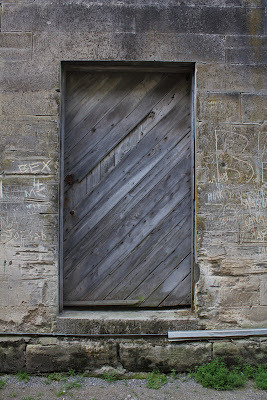
Published on February 20, 2012 23:55
February 18, 2012
Welcome to the waiting room: an almost real-time braindump about coming across what could become a book one day
I'm at that point with THE NOVEL where I know I'll be finishedwith it one day — we're talking months, not days, not years — and I can afford toopen the waiting room in my brain and let some new ideas take up residence.
Allideas are welcome, but some arrive with greater urgency than others, begging for an immediate audience with the physician.
Some arrive alone, enter the waiting room sheepishly, prefer tostand rather than take a vacant seat next to another idea. Some of these lonersturn around and walk out after a time, never to return. Others remain standing, refuse to engage with the others. Some relent, take a seat and are drawn into conversation: turns out they havesomething in common with their neighbour. Other ideas listen in, thinking, 'MaybeI'm not so alone.'
Some ideas do not arrive alone but with a posse. The leadersaying, 'There's enough of us here to keep you occupied for the next two years.'
This afternoon I read Brian Dillon's piece 'Ruin Lust: our loveaffair with decaying buildings' in The Guardian.I'm interested in ruins, abandoned and derelict buildings, all of that. Just inthe last three weeks I've posted about the old Sydney Street substation inWellington and the shut-up Arcadia Theatre in Waimate... But my interest stretches backfurther, at least to 2007 when my brother started a series ofphotos on the theme of abandonment... one of which is still the wallpaper on my laptop.
This explains why I read the Guardian article, but simply being reminded ofmy fascination with the derelict is not an idea. To return to the waiting roommetaphor, I've actually opened up several waiting rooms. One of themhas 'Short Stories' written on the door. Another 'Narrative non-fiction'. Today Imight have opened a 'Ruins and abandonment'-themed waiting room and begun to siphon all my interests and ideas around this topic into the one space andlet them mingle, hook up and fall out while I went about other things.
But there was a particular passage of Dillion's article thatgrabbed me.
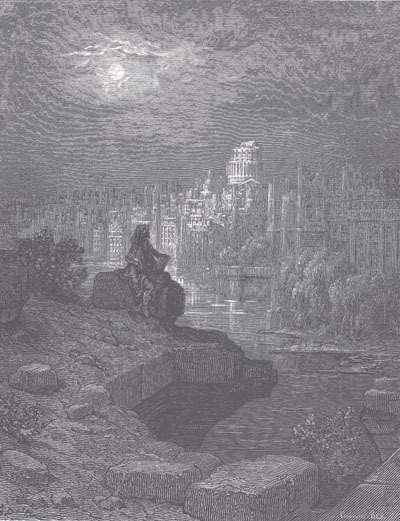 Doré, Gustave and Blanchard Jerrold (1872) in London. A Pilgrimage.Having read these words, a posse ofideas stormed the waiting room with 'My next novel' painted on the door.
Doré, Gustave and Blanchard Jerrold (1872) in London. A Pilgrimage.Having read these words, a posse ofideas stormed the waiting room with 'My next novel' painted on the door.
I'm not saying it will be my nextnovel, or if these ideas are any good, but I'm noting the process down here to illustrate, in some small way, how inspiration might arrive and how I handle it, plan for it,plan with it, and get things done. Or how I fool myself about these things.
This idea of a New Zealandertravelling to ruined civilisations is rich with possibilities.
My first thoughtwas that this is what New Zealanders do on their OEs already.
Macaulay's comment seems doubly prescient as it was made in 1840, the year the Treaty of Waitangi wassigned. While it might not have been the birth of the nation (that would ignore alot of feuding and plundering and some 'we're getting along just fine thanks'), but the events of that year were undoubtedly a catalyst for many of the things that make New Zealand unique today.
Then there's the idea of 'the NewZealander' just being a throwaway line of Macaulay's, an example of someonefrom far away, and presumably from a less civilised place. It brought to mind Dominic Corry's piece in the NZ Herald Online last week, 'When movies mention New Zealand.' There are tons of examples from film, TV, books and even video games where New Zealand is shorthand for 'very far away'. It's interesting that this dates from at least as far back as 1840.
I can't tell fromthe Macauley quote or Doré's engraving whether 'New Zealander' in this contextmeans 'Maori', as the two terms could be synonymous around this time. But there'sanother interesting idea that could be dug into further.
If we're to take Macauley's idea literally, a story would have to have a NewZealander look upon a ruined London. It could perhaps take place duringthe city's bombardment during WWII, but I'm not so keen on doing something historicalnext. The future seems a much more interesting place. The post-apocalyptic section of David Mitchell's Cloud Atlas comes to mind. In fact, a lot of examples come to mind.Post-apocalyptic fiction seems to have been done to death. But the challenge oftaking up a tired genre and introducing new life has its own appeal.
As you can see, there are novelishideas here, not all of them complementary. It could be a contemporary story ofa New Zealander (or a number of them) travelling around Europe and addressing the EUfinancial crisis and a bunch of other 'fall of a civilisation c.2012' topics. It could be an historicalnovel set in the 1940s. It could be something set in the future, post London'sown apocalypse (or a worldwide apocalypse). And there may be less literal, lessblindingly obvious interpretations of this idea which have yet to enter thewaiting room.
The above summarises my first 30 to 60 seconds of head-time after reading the Macauley quotation and clicking the link to see Doré's engraving. But to end the story herewould be incomplete and unhelpful. What happens next when an idea sticks up it's hand and says, 'Consider Me!'?
Well, after thinking to myself that 'The NewZealander' could be one of several types of novel, I finished reading Dillon'sarticle. In truth, I started to skim as it held little remaining interest.
Then I googled to see if there wereother images of the New Zealander looking upon a ruined London online. I got awhole lot of Doré's engraving, but nothing else after scrolling through the first few dozen results.
I did, however, open up two pages thatpromised to address Macauley's quotation in more detail. The first was 'WhenThe New Zealander Comes' by Prof. Blyde Muddersnook, P.O.Z.A.S. from The StrandMagazine, September 1911 (via forgottenfutures.com)
Let us take a moment to admire theauthor's name.
Okay.The next link was to "TheStupendous Past": Rose Macaulay's Pleasure of Ruins" by WillViney.This second one looked to be lessabout Thomas Babington Macaulay than his first cousin twice removed, so Itackled it first (being inherently lazy and impatient; if I was an insect I'dbe one of those ones that spend most of their time zipping around on the surface ofponds).
An interesting tidbit worth noting:
Let us take a moment to admire thepun in 'ruined rhetoric.'
Okay.
The article notes that Doré's NewZealander is a "racial and political outsider, wandering from theperiphery of things to visit the fallen core of an empire now past" (myemphasis). Okay, duly noted.
If I decide to pursue this 'The NewZealander' idea further, I guess I'll have to tackle Rose Macauley's 'Pleasureof Ruins', but for now I was happy just to skim the rest of the article.
I then turned to Prof. BlydeMuddersnook's 1911 article.
I quickly realised thiswas a piece of satire (man, I wish there was a real Prof. Muddersnook). It's the future, baby, and NewZealand is the height of civilisation (and now just called Zealand). Lun-dun isbeing excavated. A team of archaeologists from Auckland arrive at "theancient village of Suthuk, which is on the edge of the river-bed of the Thames,most of which is now reclaimed land planted with cabbages, the export of whichforms the principal staple of the country."
The appeal and the limitations of the piece areevident in the following two sentences, midway through:
You can't start two sentences with 'indeed'. But it isfunny, in a trying-slightly-too-hard way.
I'll admit, again, that I reverted to my skimming ways not longafter this passage.
I think there's only so long you can explore a newidea immediately following its entrance into the waiting room.
It did occur to me that, as I was sitting at my computer and distracted by ideas that aren't anything to do with THE NOVEL, I could write the last hour up as a blog post. Et voila!
It's best nowthat I walk away. Play hard to get with 'The New Zealander(s)'. If the posse is still there when I'm readyfor them, then I'll come back here and click on these next few links (which I haven't read and can't vouch for their relevance):'Searching for Gems in Future History' Alan Sandisonand Robert Dingley, eds. Histories of the Future: Studies in Fact, Fantasyand Science Fiction.'Tourists at the ruins of London:The Metropolis and the Struggle for Empire'and Contemplating the Ruins of London: Macaulay's NewZealander and Others by David Skilton Stay tuned. One day I may post about what happens when an idea sticks up its hand and says 'Reconsider Me!'

Allideas are welcome, but some arrive with greater urgency than others, begging for an immediate audience with the physician.
Some arrive alone, enter the waiting room sheepishly, prefer tostand rather than take a vacant seat next to another idea. Some of these lonersturn around and walk out after a time, never to return. Others remain standing, refuse to engage with the others. Some relent, take a seat and are drawn into conversation: turns out they havesomething in common with their neighbour. Other ideas listen in, thinking, 'MaybeI'm not so alone.'
Some ideas do not arrive alone but with a posse. The leadersaying, 'There's enough of us here to keep you occupied for the next two years.'
This afternoon I read Brian Dillon's piece 'Ruin Lust: our loveaffair with decaying buildings' in The Guardian.I'm interested in ruins, abandoned and derelict buildings, all of that. Just inthe last three weeks I've posted about the old Sydney Street substation inWellington and the shut-up Arcadia Theatre in Waimate... But my interest stretches backfurther, at least to 2007 when my brother started a series ofphotos on the theme of abandonment... one of which is still the wallpaper on my laptop.
This explains why I read the Guardian article, but simply being reminded ofmy fascination with the derelict is not an idea. To return to the waiting roommetaphor, I've actually opened up several waiting rooms. One of themhas 'Short Stories' written on the door. Another 'Narrative non-fiction'. Today Imight have opened a 'Ruins and abandonment'-themed waiting room and begun to siphon all my interests and ideas around this topic into the one space andlet them mingle, hook up and fall out while I went about other things.
But there was a particular passage of Dillion's article thatgrabbed me.
Reviewing Leopold von Ranke's History of the Popes in theEdinburgh Review, [Thomas Babington] Macaulay speculates that in the distantfuture Catholicism "may still exist in undiminished vigour when sometraveller from New Zealand shall, in the midst of a vast solitude, take hisstand on a broken arch of London Bridge to sketch the ruins of St Paul's".Macaulay's New Zealander, gazing at the wreckage of the metropolis (and byextension on the fall of the British empire), was for decades a popular imageof London's future ruin – its most notable avatar is Gustave Doré's engraving The New Zealander.
 Doré, Gustave and Blanchard Jerrold (1872) in London. A Pilgrimage.Having read these words, a posse ofideas stormed the waiting room with 'My next novel' painted on the door.
Doré, Gustave and Blanchard Jerrold (1872) in London. A Pilgrimage.Having read these words, a posse ofideas stormed the waiting room with 'My next novel' painted on the door.I'm not saying it will be my nextnovel, or if these ideas are any good, but I'm noting the process down here to illustrate, in some small way, how inspiration might arrive and how I handle it, plan for it,plan with it, and get things done. Or how I fool myself about these things.
This idea of a New Zealandertravelling to ruined civilisations is rich with possibilities.
My first thoughtwas that this is what New Zealanders do on their OEs already.
Macaulay's comment seems doubly prescient as it was made in 1840, the year the Treaty of Waitangi wassigned. While it might not have been the birth of the nation (that would ignore alot of feuding and plundering and some 'we're getting along just fine thanks'), but the events of that year were undoubtedly a catalyst for many of the things that make New Zealand unique today.
Then there's the idea of 'the NewZealander' just being a throwaway line of Macaulay's, an example of someonefrom far away, and presumably from a less civilised place. It brought to mind Dominic Corry's piece in the NZ Herald Online last week, 'When movies mention New Zealand.' There are tons of examples from film, TV, books and even video games where New Zealand is shorthand for 'very far away'. It's interesting that this dates from at least as far back as 1840.
I can't tell fromthe Macauley quote or Doré's engraving whether 'New Zealander' in this contextmeans 'Maori', as the two terms could be synonymous around this time. But there'sanother interesting idea that could be dug into further.
If we're to take Macauley's idea literally, a story would have to have a NewZealander look upon a ruined London. It could perhaps take place duringthe city's bombardment during WWII, but I'm not so keen on doing something historicalnext. The future seems a much more interesting place. The post-apocalyptic section of David Mitchell's Cloud Atlas comes to mind. In fact, a lot of examples come to mind.Post-apocalyptic fiction seems to have been done to death. But the challenge oftaking up a tired genre and introducing new life has its own appeal.
As you can see, there are novelishideas here, not all of them complementary. It could be a contemporary story ofa New Zealander (or a number of them) travelling around Europe and addressing the EUfinancial crisis and a bunch of other 'fall of a civilisation c.2012' topics. It could be an historicalnovel set in the 1940s. It could be something set in the future, post London'sown apocalypse (or a worldwide apocalypse). And there may be less literal, lessblindingly obvious interpretations of this idea which have yet to enter thewaiting room.
The above summarises my first 30 to 60 seconds of head-time after reading the Macauley quotation and clicking the link to see Doré's engraving. But to end the story herewould be incomplete and unhelpful. What happens next when an idea sticks up it's hand and says, 'Consider Me!'?
Well, after thinking to myself that 'The NewZealander' could be one of several types of novel, I finished reading Dillon'sarticle. In truth, I started to skim as it held little remaining interest.
Then I googled to see if there wereother images of the New Zealander looking upon a ruined London online. I got awhole lot of Doré's engraving, but nothing else after scrolling through the first few dozen results.
I did, however, open up two pages thatpromised to address Macauley's quotation in more detail. The first was 'WhenThe New Zealander Comes' by Prof. Blyde Muddersnook, P.O.Z.A.S. from The StrandMagazine, September 1911 (via forgottenfutures.com)
Let us take a moment to admire theauthor's name.
Okay.The next link was to "TheStupendous Past": Rose Macaulay's Pleasure of Ruins" by WillViney.This second one looked to be lessabout Thomas Babington Macaulay than his first cousin twice removed, so Itackled it first (being inherently lazy and impatient; if I was an insect I'dbe one of those ones that spend most of their time zipping around on the surface ofponds).
An interesting tidbit worth noting:
"So prevalent did this idea of theinquisitive and judgmental New Zealander become that by 1865 Punch placedit on their list of ruined rhetoric, literary devices judged to be "used up,exhausted, threadbare, stale and hackneyed."
Let us take a moment to admire thepun in 'ruined rhetoric.'
Okay.
The article notes that Doré's NewZealander is a "racial and political outsider, wandering from theperiphery of things to visit the fallen core of an empire now past" (myemphasis). Okay, duly noted.
If I decide to pursue this 'The NewZealander' idea further, I guess I'll have to tackle Rose Macauley's 'Pleasureof Ruins', but for now I was happy just to skim the rest of the article.
I then turned to Prof. BlydeMuddersnook's 1911 article.
I quickly realised thiswas a piece of satire (man, I wish there was a real Prof. Muddersnook). It's the future, baby, and NewZealand is the height of civilisation (and now just called Zealand). Lun-dun isbeing excavated. A team of archaeologists from Auckland arrive at "theancient village of Suthuk, which is on the edge of the river-bed of the Thames,most of which is now reclaimed land planted with cabbages, the export of whichforms the principal staple of the country."
The appeal and the limitations of the piece areevident in the following two sentences, midway through:
"Indeed, it is no wonder that this island becamegradually depopulated in the course of centuries, when its inhabitants had toendure such climatic hardships. Indeed, to one accustomed to the climates ofold Zealand, Australis, Krugerland, Mapleland, Dai-Nippon, and other parts ofthe world, not to mention Mars and the moon, it is hard to realize how anyintelligent race of men would consent to continue existence in such a bleakisland."
You can't start two sentences with 'indeed'. But it isfunny, in a trying-slightly-too-hard way.
I'll admit, again, that I reverted to my skimming ways not longafter this passage.
I think there's only so long you can explore a newidea immediately following its entrance into the waiting room.
It did occur to me that, as I was sitting at my computer and distracted by ideas that aren't anything to do with THE NOVEL, I could write the last hour up as a blog post. Et voila!
It's best nowthat I walk away. Play hard to get with 'The New Zealander(s)'. If the posse is still there when I'm readyfor them, then I'll come back here and click on these next few links (which I haven't read and can't vouch for their relevance):'Searching for Gems in Future History' Alan Sandisonand Robert Dingley, eds. Histories of the Future: Studies in Fact, Fantasyand Science Fiction.'Tourists at the ruins of London:The Metropolis and the Struggle for Empire'and Contemplating the Ruins of London: Macaulay's NewZealander and Others by David Skilton Stay tuned. One day I may post about what happens when an idea sticks up its hand and says 'Reconsider Me!'
Published on February 18, 2012 20:14
February 16, 2012
Arthur and George's tipping point into slow water
Reading muddle
I'm in a bit of a (paper) reading muddle at the moment. I seem to start a book I'm really excited about, then something more important will come along that I need to read, like the latest book from a writer with whom I'm appearing on a panel discussion in Perth (I fly out in less than a week, excitement).

But the real culprit seems to be the millstone of reading Commonwealth Short Story Prize entries. Not that being a judge isn't a privilege and reading the stories isn't fun and often edifying, but reading pdf's on my iPad seems to have eaten up all my paper reading time. (It also doesn't help that several of the books I'm trying to finish are short story collections themselves, making it easier to put down at the end of a story and not pick back up). iPads are great things, but reading for anything more than twenty minutes on the backlit screen is tiring. And on beaut days like today, you can't read outside!!
I guess it beats printing all the stories out and killing the planet.
Talk to me
I have, however, been ploughing through audiobooks.
 First up,
The Tipping Point
by Malcolm Gladwell. It's really hard to judge this book on it's merits after it made such a big splash when it was released more than a decade ago and many of its terms and ideas have permeated the culture.
First up,
The Tipping Point
by Malcolm Gladwell. It's really hard to judge this book on it's merits after it made such a big splash when it was released more than a decade ago and many of its terms and ideas have permeated the culture.
But it was nice to spend eight hours with Gladwell after only reading the occasional New Yorker article from him.
One of the cool things about the audiobook is that it's read by Gladwell himself. I'm sure the book reads personably on the page, but it's lifted to another level when he's speaking sense right into your ear.
 Then it was back to fiction with Arthur and George by Julian Barnes. The novel is based on the real life struggle of solicitor George Edalji and his famous supporter, Sir Arthur Conan Doyle, against accusations of animal mutilation and criminal mischief.
Then it was back to fiction with Arthur and George by Julian Barnes. The novel is based on the real life struggle of solicitor George Edalji and his famous supporter, Sir Arthur Conan Doyle, against accusations of animal mutilation and criminal mischief.
The novel is much longer than Barnes' most recent work, The Sense of an Ending, which I read and enjoyed last year. A&G feels more substantial because of this greater length and historical weighting, but it fails to ever really take off into truly facinating realms. It is well observed, well researched, pleasingly written at the sentence level, but fails to be interesting for long periods (some that read like pure reportage; others, such as when Conan Doyle agonises over committing infidelity for pages on end, seem more at home in a sixteenth century melodrama or Mills and Boon).
Having said this, I still think it's a good book.
 And now I'm listening to Slow Water by Annamarie Jagose. The book won the Montana Book Award in 2004, which means that a panel of judges thought it was the best book of New Zealand fiction published in the previous year.
And now I'm listening to Slow Water by Annamarie Jagose. The book won the Montana Book Award in 2004, which means that a panel of judges thought it was the best book of New Zealand fiction published in the previous year.
Without looking back at what other books were eligible that year, I can sort of see why the judges liked Slow Water. It is sumptuous at the sentence level. Both the music of the words and the evident research that has gone into getting the historical details sorted. There's also an overriding modern sensiblity that doesn't ever mess with the sense that these things actually happened, but there's a point why we're being shown this moment (always to do with hypocrisy and/or gender/sexuality).
But the plot is as slow as the title suggests. Like Arthur and George, Jagose's novel is based on a real historical event, the sexual transgressions of an English missionary, William Yate, on board the Prince Regent as he made is way back to his mission in Waimate (in the Bay of Islands, as opposed to Waimate in South Canterbury) and the subsequent fall-out when the ship docks in Sydney. But the novel does not adhere to Yate's story. Rather, it bounces around all those on board the Prince Regent, from the passengers in steerage, their children, the rough crewmen and the newbies aboard. Again, I can see why this is done (to contrast their behaviour and attitudes at sea with those in port), but for the longest time there's no plot to carry a reader through the beautiful sentences.
Again, I think Slow Water is a good book in many respects, but if this is what is expected of serious historical fiction, excuse me while I run the other way.
I'm in a bit of a (paper) reading muddle at the moment. I seem to start a book I'm really excited about, then something more important will come along that I need to read, like the latest book from a writer with whom I'm appearing on a panel discussion in Perth (I fly out in less than a week, excitement).

But the real culprit seems to be the millstone of reading Commonwealth Short Story Prize entries. Not that being a judge isn't a privilege and reading the stories isn't fun and often edifying, but reading pdf's on my iPad seems to have eaten up all my paper reading time. (It also doesn't help that several of the books I'm trying to finish are short story collections themselves, making it easier to put down at the end of a story and not pick back up). iPads are great things, but reading for anything more than twenty minutes on the backlit screen is tiring. And on beaut days like today, you can't read outside!!
I guess it beats printing all the stories out and killing the planet.
Talk to me
I have, however, been ploughing through audiobooks.
 First up,
The Tipping Point
by Malcolm Gladwell. It's really hard to judge this book on it's merits after it made such a big splash when it was released more than a decade ago and many of its terms and ideas have permeated the culture.
First up,
The Tipping Point
by Malcolm Gladwell. It's really hard to judge this book on it's merits after it made such a big splash when it was released more than a decade ago and many of its terms and ideas have permeated the culture.But it was nice to spend eight hours with Gladwell after only reading the occasional New Yorker article from him.
One of the cool things about the audiobook is that it's read by Gladwell himself. I'm sure the book reads personably on the page, but it's lifted to another level when he's speaking sense right into your ear.
 Then it was back to fiction with Arthur and George by Julian Barnes. The novel is based on the real life struggle of solicitor George Edalji and his famous supporter, Sir Arthur Conan Doyle, against accusations of animal mutilation and criminal mischief.
Then it was back to fiction with Arthur and George by Julian Barnes. The novel is based on the real life struggle of solicitor George Edalji and his famous supporter, Sir Arthur Conan Doyle, against accusations of animal mutilation and criminal mischief.The novel is much longer than Barnes' most recent work, The Sense of an Ending, which I read and enjoyed last year. A&G feels more substantial because of this greater length and historical weighting, but it fails to ever really take off into truly facinating realms. It is well observed, well researched, pleasingly written at the sentence level, but fails to be interesting for long periods (some that read like pure reportage; others, such as when Conan Doyle agonises over committing infidelity for pages on end, seem more at home in a sixteenth century melodrama or Mills and Boon).
Having said this, I still think it's a good book.
 And now I'm listening to Slow Water by Annamarie Jagose. The book won the Montana Book Award in 2004, which means that a panel of judges thought it was the best book of New Zealand fiction published in the previous year.
And now I'm listening to Slow Water by Annamarie Jagose. The book won the Montana Book Award in 2004, which means that a panel of judges thought it was the best book of New Zealand fiction published in the previous year.Without looking back at what other books were eligible that year, I can sort of see why the judges liked Slow Water. It is sumptuous at the sentence level. Both the music of the words and the evident research that has gone into getting the historical details sorted. There's also an overriding modern sensiblity that doesn't ever mess with the sense that these things actually happened, but there's a point why we're being shown this moment (always to do with hypocrisy and/or gender/sexuality).
But the plot is as slow as the title suggests. Like Arthur and George, Jagose's novel is based on a real historical event, the sexual transgressions of an English missionary, William Yate, on board the Prince Regent as he made is way back to his mission in Waimate (in the Bay of Islands, as opposed to Waimate in South Canterbury) and the subsequent fall-out when the ship docks in Sydney. But the novel does not adhere to Yate's story. Rather, it bounces around all those on board the Prince Regent, from the passengers in steerage, their children, the rough crewmen and the newbies aboard. Again, I can see why this is done (to contrast their behaviour and attitudes at sea with those in port), but for the longest time there's no plot to carry a reader through the beautiful sentences.
Again, I think Slow Water is a good book in many respects, but if this is what is expected of serious historical fiction, excuse me while I run the other way.
Published on February 16, 2012 13:45
February 10, 2012
Special Features: Old Sydney Street Substation
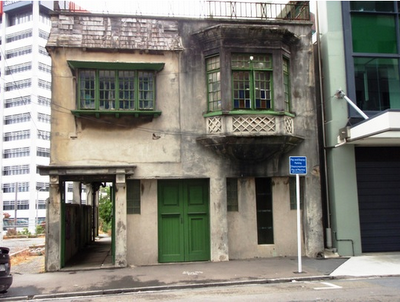 The old Sydney Street substation, photographed by Rachel Connolly. Copyright NZ Historic Places Trust .There may be some people out there who've read my column about the old Sydney Street substation in today's Your Weekend magazine and were left wanting more.
The old Sydney Street substation, photographed by Rachel Connolly. Copyright NZ Historic Places Trust .There may be some people out there who've read my column about the old Sydney Street substation in today's Your Weekend magazine and were left wanting more.Sometimes it's impossible to do a subject justice in 500 words. (If you can do it justice in 500 words, it's not worth writing about). In this instance, I really wanted to include some web addresses to help direct further enquiries, but alas.
I'm sure those sufficiently piqued could find everything via Google, but I'm going to give them (and Google) a helping hand by collecting the links together here.
The Building Itself
The Historic Places Trust's register has a very thorough report, prepared by Adrian Humphris and Inka Gliesche, on the old Sydney Street substation on. It's available online here ().
There was also an article on the old girl by Tommy Honey in Architecture NZ (Nov/Dec 2005). Not available online but I have a scan if your local library doesn't have the issue.
In my column, I mention the proposed Kate Sheppard Exchange development which could incorporate the substation. The development was in the news last year when people objected to the proposed size of the building. I emailed the developers, Redwood Group, seeking an update on the project but I didn't receive a response before my deadline (and haven't since, but can't be bothered pestering them).
On Wellington's Substations
The Architecture Electric, a photographic survey of Wellington's substations, is available as a free e-book here.
I asked the architecture types I interviewed if they had favourite substations in town and received two responses.If, like me, you've developed a sudden interest in substations, you might want to check out some of these:
Tyson Schmidt (co-author of 'The Architecture Electric)
1. Have a picnic and watch the planes at the concrete panel marvel that is the Moa Point Road substation (page 14 of our book)
2. Venture above Boyd Wilson Field to Victoria University's Te Puni Village to look at the wind sculpture atop the University Zone substation (page 109)
3. Be impressed by the massive steel doors on the Moore Street Zone substation behind ECC lighting (page 106)
4. Walk the tracks of Mt Victoria until you find the Hataitai Zone substation with its wall of mesh encasing the large transformers (page 105)
5. Enjoy the graffiti used to disguise substations such as 69 Miramar Road (p.73) and down Lukes Lane (p.72, great Keith Haring-inspired figures on that one)
6. Jog past the substation with clean classical stylings on the corner of one of Wellington's most expensive streets (The Crescent in Roseneath) (p.54)
Adam Alexander (architect)
1. St John St Substation (adjacent to Aro Valley Park)
2. Lower Tory St (between Courtenay Place and Cable St)
3. 10 Haining St (off upper Tory St)
4. Hankey St Substation (intersection of Taranaki, Hankey and Wallace St)
5.Salamanca Rd (Near top of cable car)
Published on February 10, 2012 09:30
February 9, 2012
Research Roadtrip: Wildlife
In this final instalment on my trip down south I will fulfil my promise (and then some) of posting bird photos .
 Northern royal albatross, Taiaroa Heads, Otago
Northern royal albatross, Taiaroa Heads, Otago
More albatross, plus hoiho, godwit, giant petrels and more, after the jump...
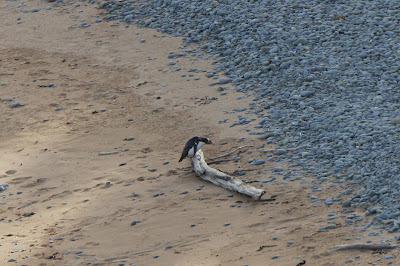 Yellow-eyed penguin, Oamaru
Yellow-eyed penguin, Oamaru
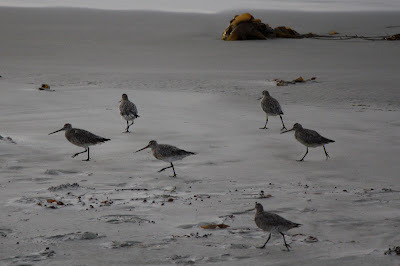 Godwits, Karitane
Godwits, Karitane
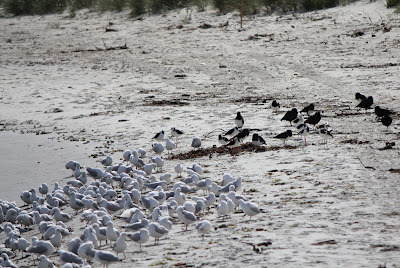 Stilts, South Island pied & variable oystercatchers, black-billed gulls, Otago Peninsula
Stilts, South Island pied & variable oystercatchers, black-billed gulls, Otago Peninsula
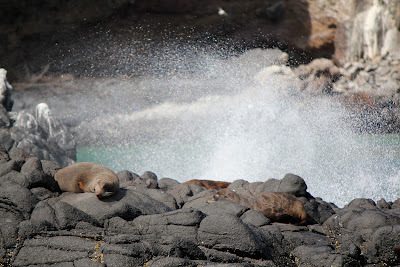 NZ fur seals, Taiaroa Head
NZ fur seals, Taiaroa Head
 Royal albatross (I think this one was a Southern Royal...
Royal albatross (I think this one was a Southern Royal...
I know we saw one, but can't be sure if this was it without seeing its back)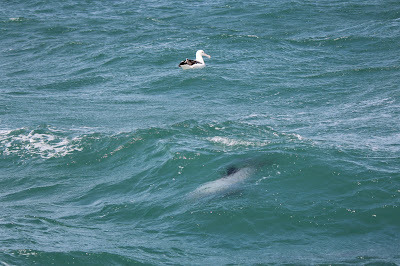 Northern royal albatross and a Hector's dolphon
Northern royal albatross and a Hector's dolphon
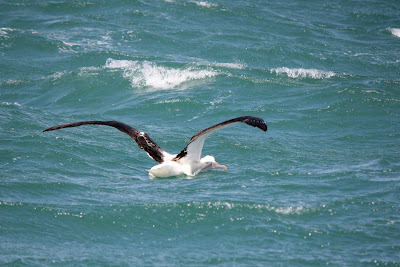 Havin' a scratch
Havin' a scratch
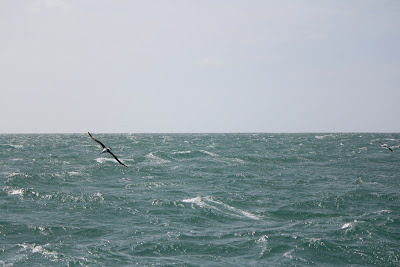 White-capped albatross (left) and a northern royal (left)
White-capped albatross (left) and a northern royal (left)
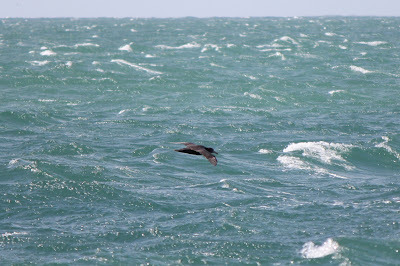 Giant petrel
Giant petrel
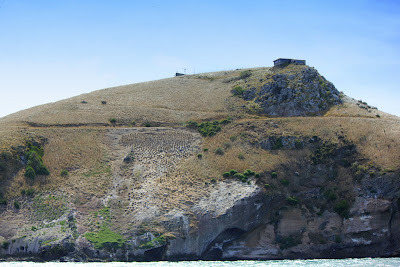 Taiaroa Head, with Stewart Island shag colony
Taiaroa Head, with Stewart Island shag colony
and viewing point for northern royal albatross nesting sites.
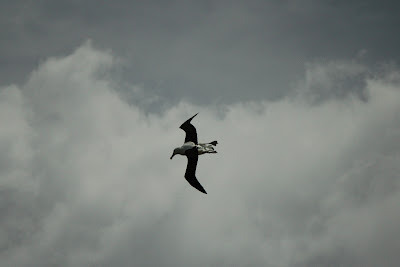
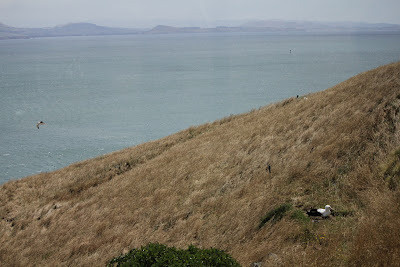 Nesting sites (the two white dots along the ridge line are also nests)
Nesting sites (the two white dots along the ridge line are also nests)
 Northern royal coming in for a landing
Northern royal coming in for a landing
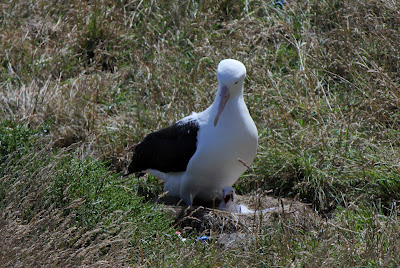 Parent and chick
Parent and chick

 Northern royal albatross, Taiaroa Heads, Otago
Northern royal albatross, Taiaroa Heads, OtagoMore albatross, plus hoiho, godwit, giant petrels and more, after the jump...
 Yellow-eyed penguin, Oamaru
Yellow-eyed penguin, Oamaru
 Godwits, Karitane
Godwits, Karitane
 Stilts, South Island pied & variable oystercatchers, black-billed gulls, Otago Peninsula
Stilts, South Island pied & variable oystercatchers, black-billed gulls, Otago Peninsula
 NZ fur seals, Taiaroa Head
NZ fur seals, Taiaroa Head
 Royal albatross (I think this one was a Southern Royal...
Royal albatross (I think this one was a Southern Royal... I know we saw one, but can't be sure if this was it without seeing its back)
 Northern royal albatross and a Hector's dolphon
Northern royal albatross and a Hector's dolphon
 Havin' a scratch
Havin' a scratch
 White-capped albatross (left) and a northern royal (left)
White-capped albatross (left) and a northern royal (left)
 Giant petrel
Giant petrel
 Taiaroa Head, with Stewart Island shag colony
Taiaroa Head, with Stewart Island shag colony and viewing point for northern royal albatross nesting sites.

 Nesting sites (the two white dots along the ridge line are also nests)
Nesting sites (the two white dots along the ridge line are also nests) Northern royal coming in for a landing
Northern royal coming in for a landing
 Parent and chick
Parent and chick
Published on February 09, 2012 16:50
February 8, 2012
Research Roadtrip: Clay Cliffs and Earthquakes
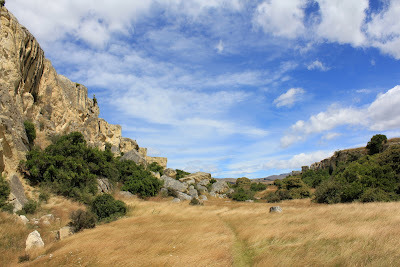 Earthquakes, Waitaki District
Earthquakes, Waitaki DistrictI went down south with a rough itinerary and a bunch of must sees (towns, museums, coastal stretches), but I had enough time to detour to places that sounded cool on the sign post or my GPS screen.
Two of these detours yielded fantastic results.
The first was Clay Cliffs, which is near Omarama. (I didn't acknowledge the aural similarity to my name at the time, but I can't rule out that it was a determining factor in my going there).
After leaving the main road and driving for ten kilometres (most of it gravel, punctuated by several gates for livestock) and walking for perhaps another k, you reach some, uh, clay cliffs.
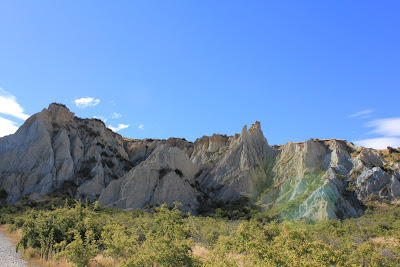
They reminded me a lot of the Putangirua Pinnacles in the Wairarapa, except these formations were a sandy brown rather than cement grey.
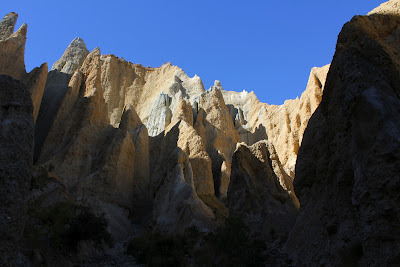
The sun was shining. The nearby braided river slipped by. Rock pigeons swooped from ledge to ledge, behaving as they must in their natural habitats (there's nothing like seeing a city bird in the country to redeem it). Emerging from a niche in the cliffs I was met with this view:
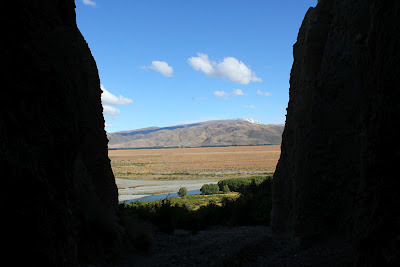
Great stuff.
If you intend on visiting, I recommend visiting the Omarama i-site first to pay your $5, as Clay Cliffs is on a private estate (the money goes towards upkeep of the area).
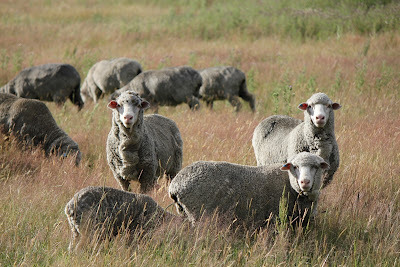 Sheep, Clay Cliffs EstateThe next day I turned off the highway at Duntroon and headed to a township (as it appeared to be on my GPS) called Earthquakes. I knew nothing more than its name, but that was intriguing enough. What would a town called Earthquakes look like? Why the plural?
Sheep, Clay Cliffs EstateThe next day I turned off the highway at Duntroon and headed to a township (as it appeared to be on my GPS) called Earthquakes. I knew nothing more than its name, but that was intriguing enough. What would a town called Earthquakes look like? Why the plural? Turns out Earthquakes is hardly a township. More like two farmhouses situated close to the road (gravel once more). But, as you might expect from the name, the area is interesting geologically -- even if the cliffs and ravines weren't formed by earthquakes but a landslide thousands of years ago.
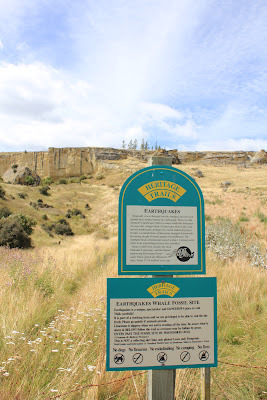
It also turns out the area is rich in fossils (there's even a Fossil Trail through the region), with a whale fossil on display about two hundred metres from the parking spot at Earthquakes.
The real highlight for me, however, was the landscape. The long, fine grass. The waxy coprosmas. The limestone cliffs. The green and yellow rolling pasture in the distance, leading to the freshly snow-dusted ranges.
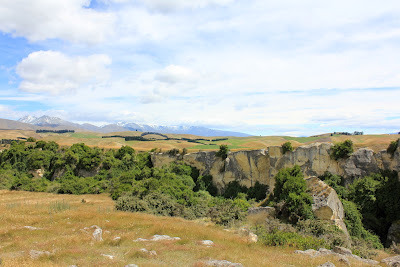
Again, it helps it was a stunning day and that I was all on my lonesome in this magical place.
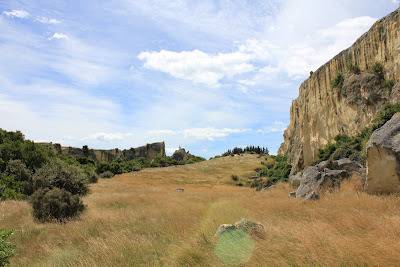
One problem with being alone and somewhat awestruck is there are holes littered eitherside of the path. At one point an unseen bird rustled in a nearby bush. I stopped to see what it was. The movement stopped. I stepped slowly toward the bush, then suddenly my left left was in a hole up to the hip.
 The offending holeIf it had been a few inches deeper, I'd have done some serious damage. If it had been slightly shallower and the bottom more uneven, I could have badly twisted or even broken my ankle. Getting outta Earthquakes alone would have been fun.
The offending holeIf it had been a few inches deeper, I'd have done some serious damage. If it had been slightly shallower and the bottom more uneven, I could have badly twisted or even broken my ankle. Getting outta Earthquakes alone would have been fun.But all I got was a bruise on my ankle and a lesson in birdwatching.

Published on February 08, 2012 11:39



